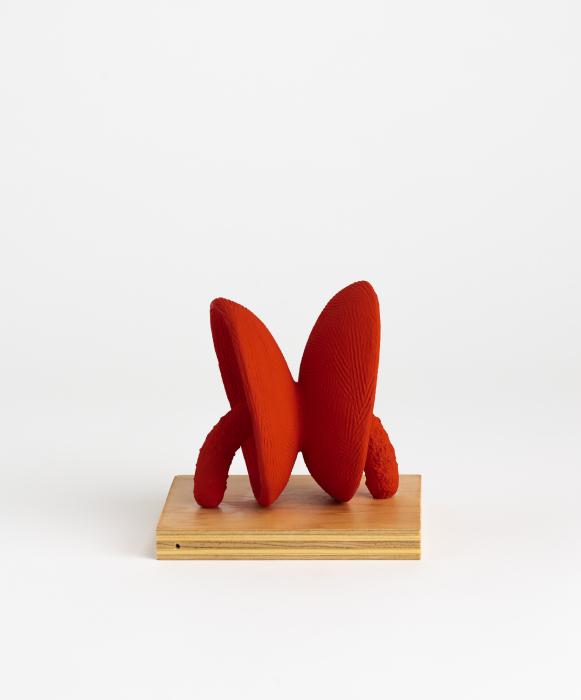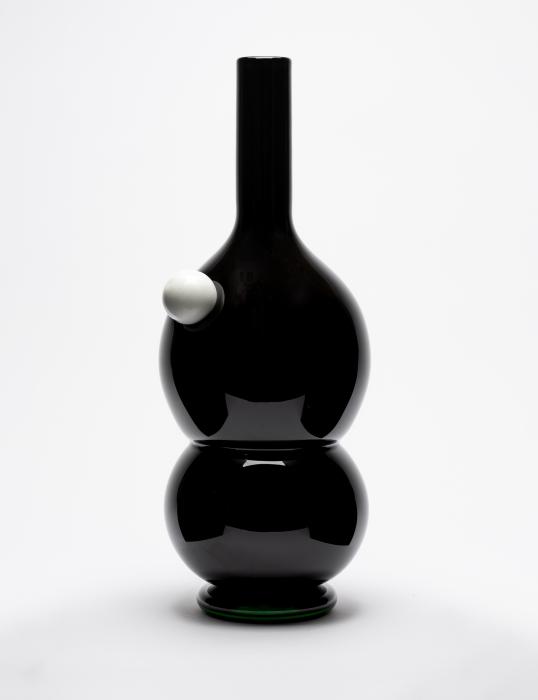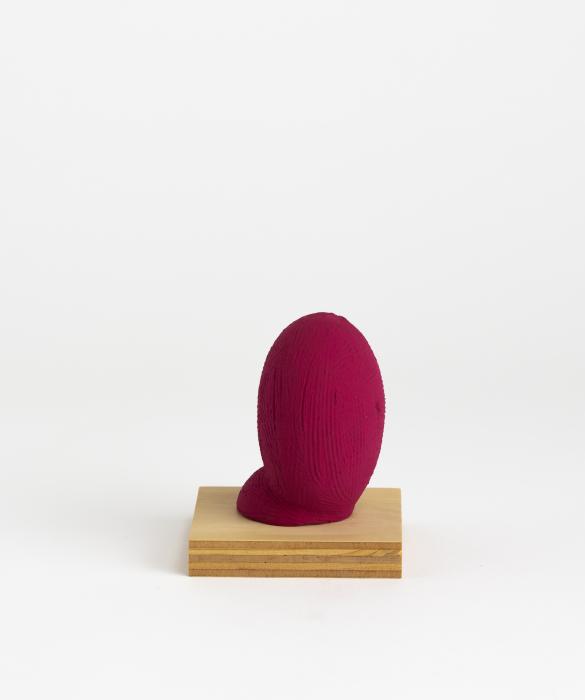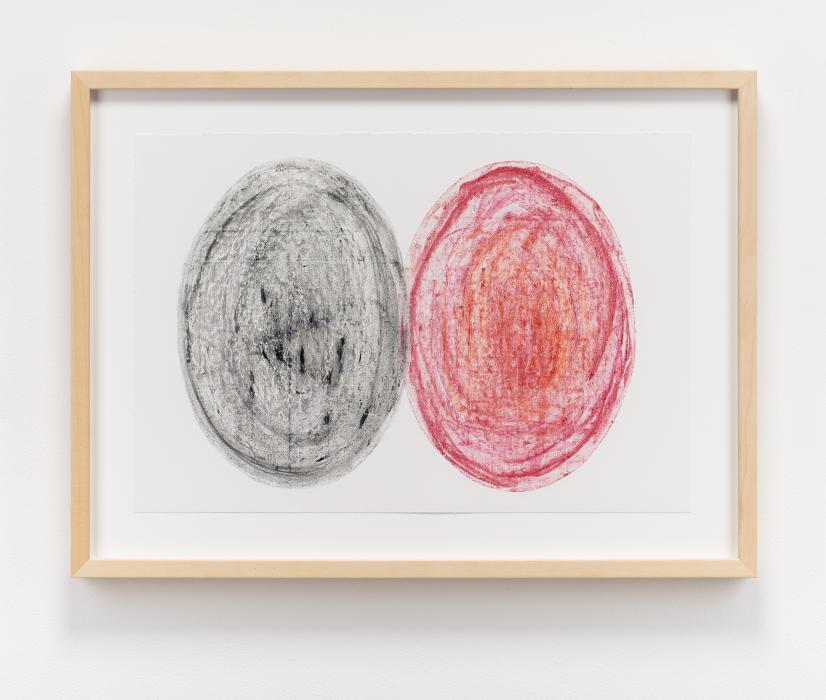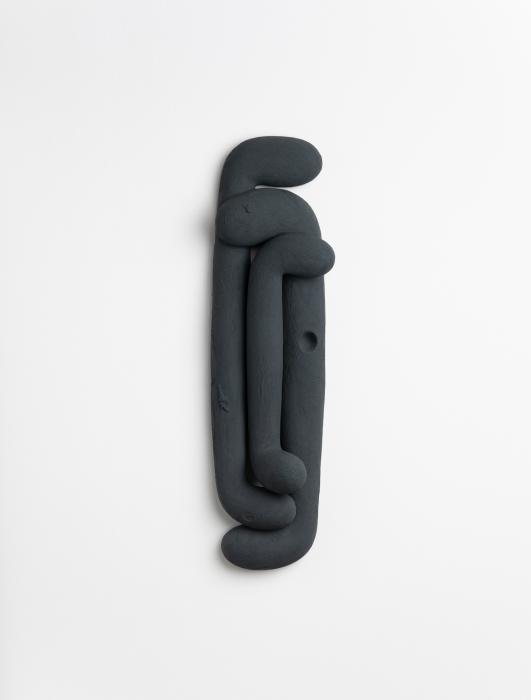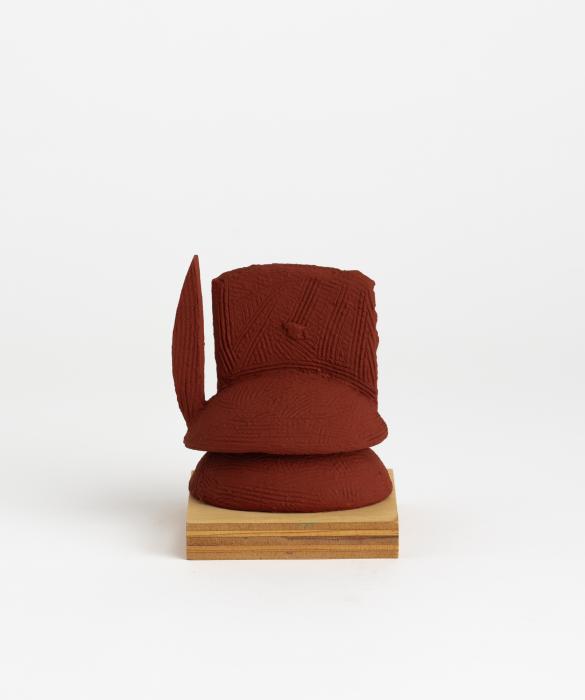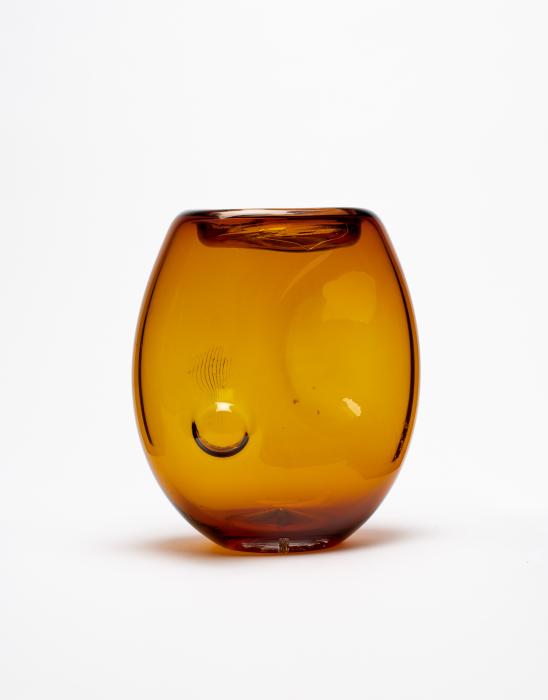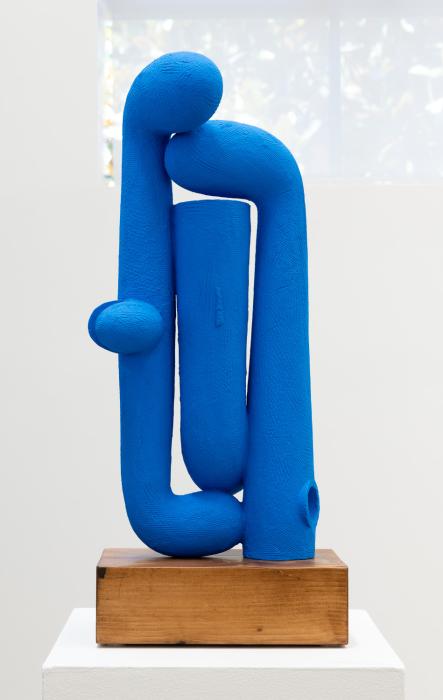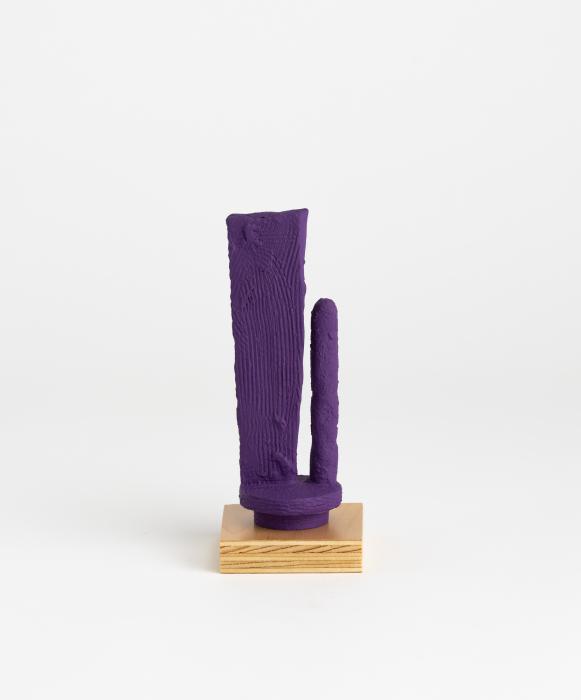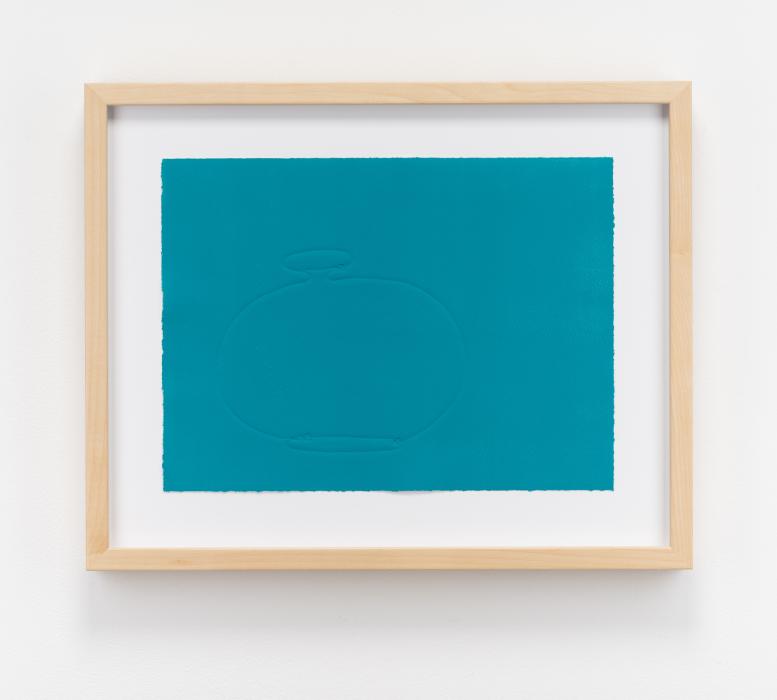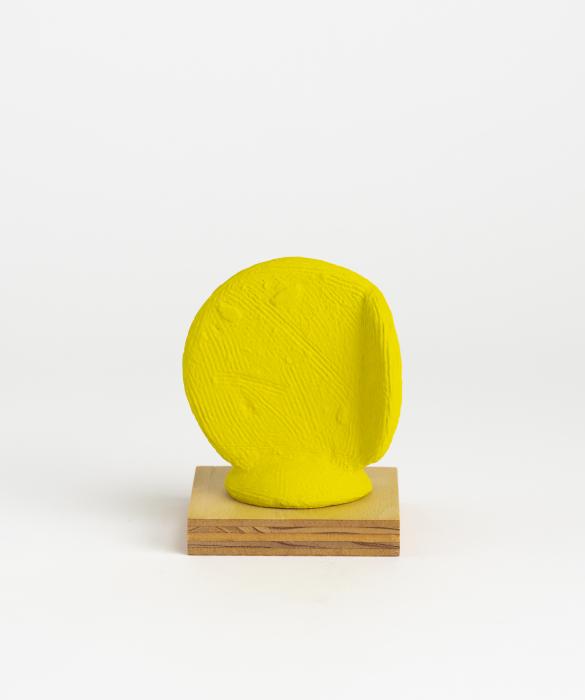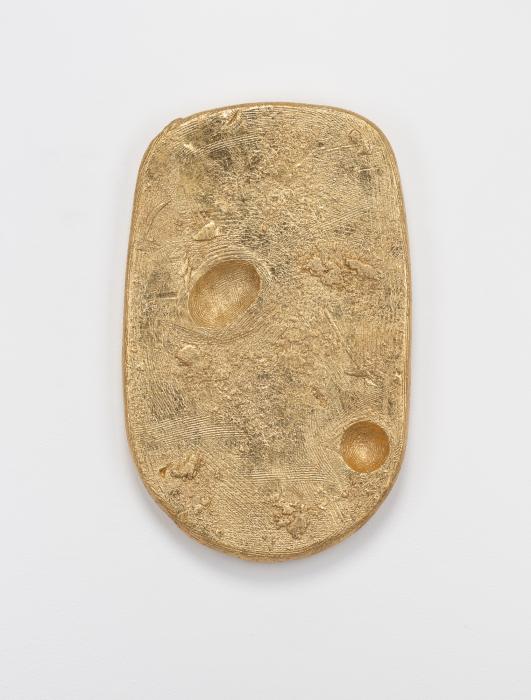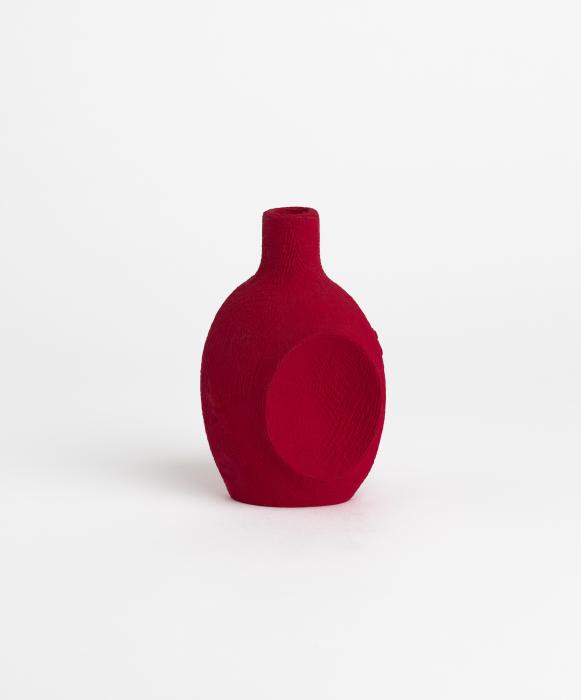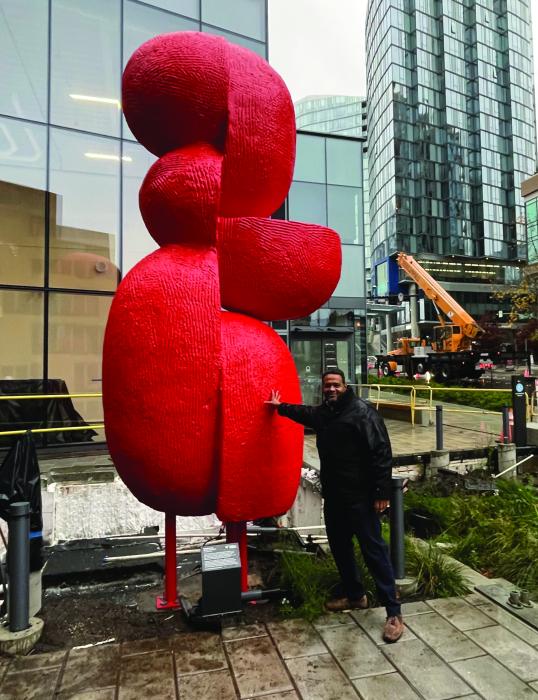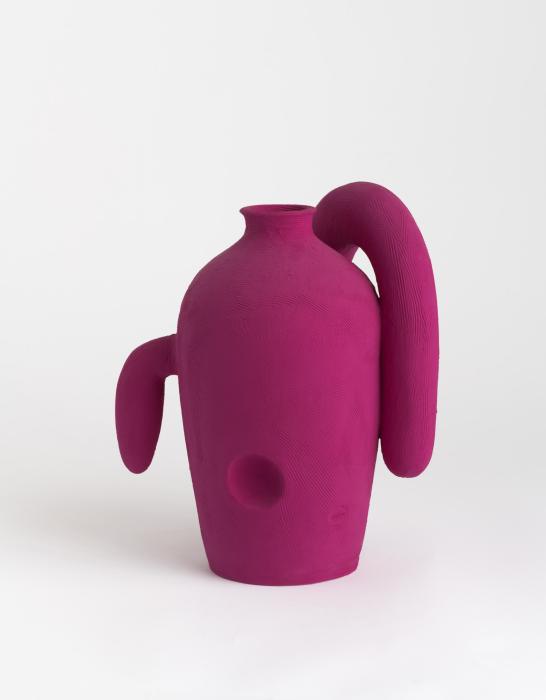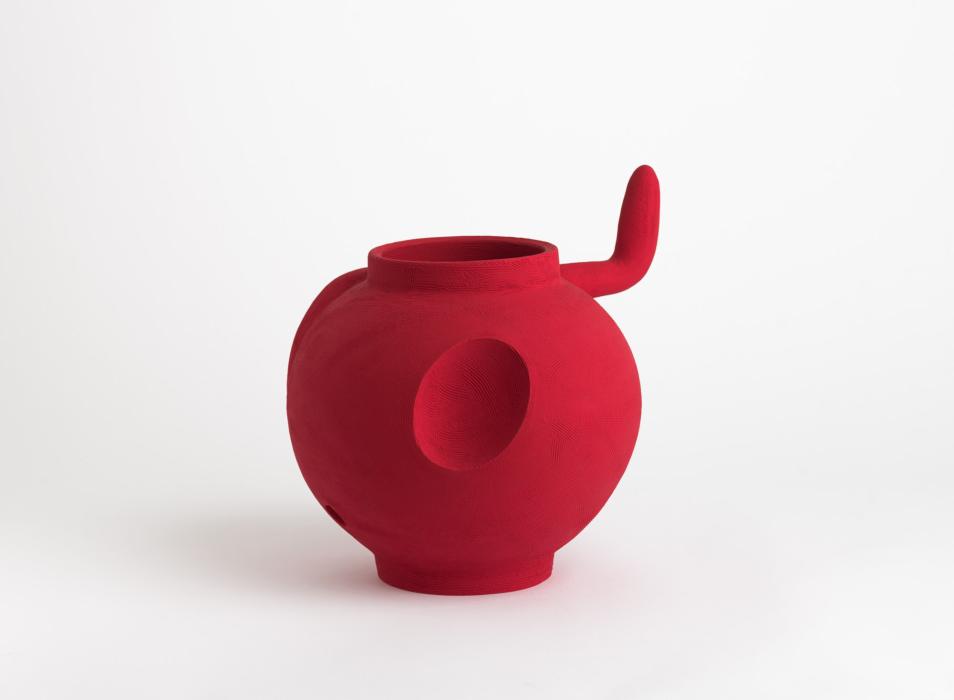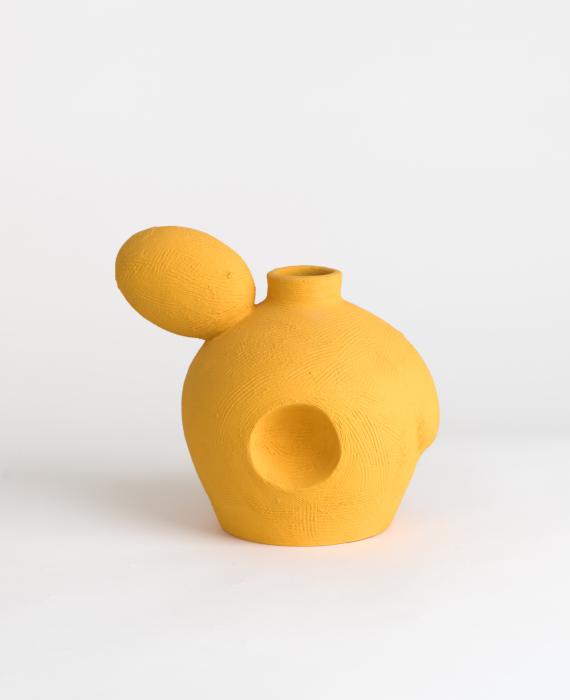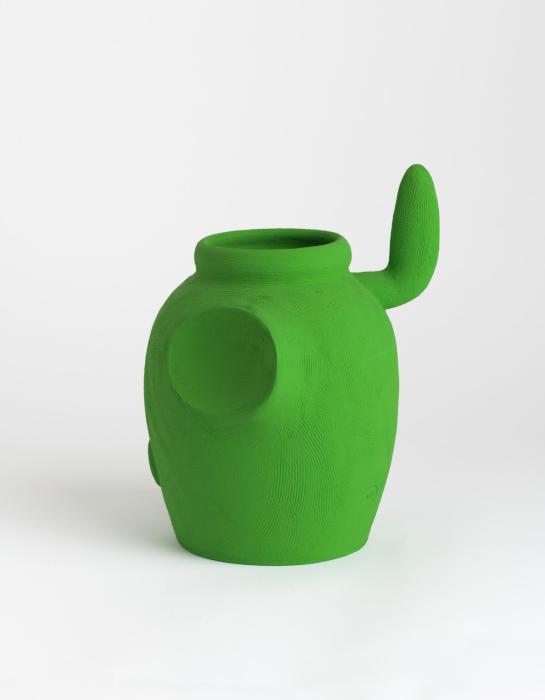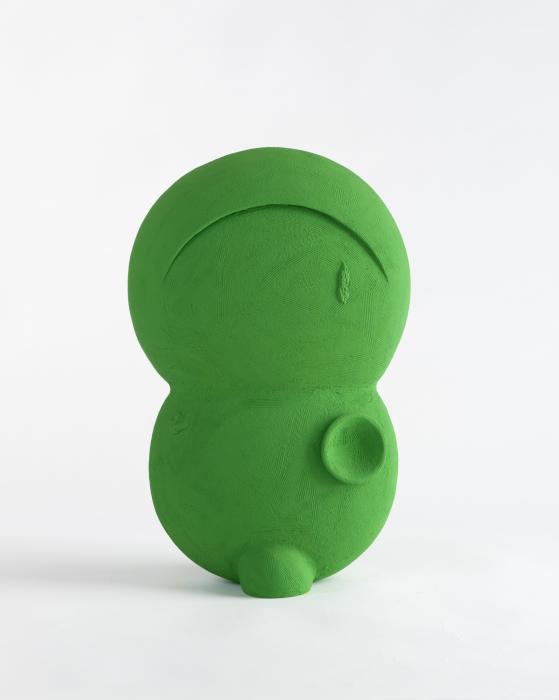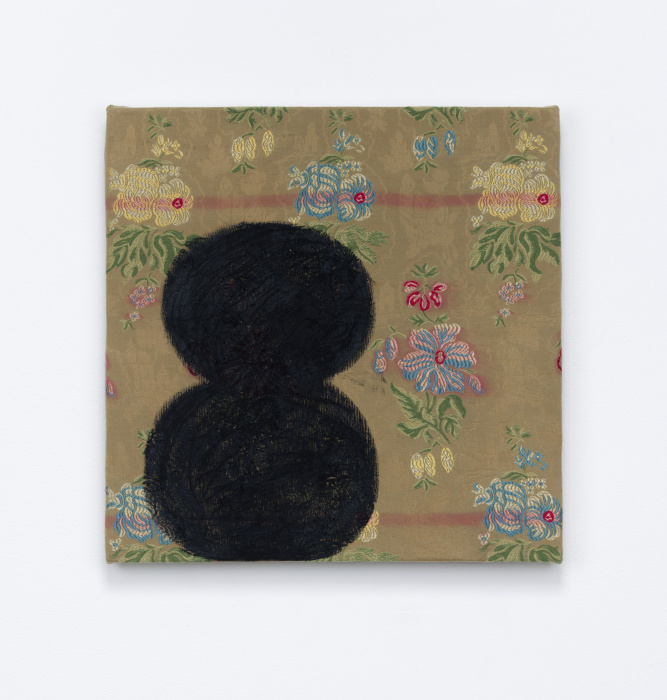As a boy, I learned about Modernism through magazines and TV documentaries. It was there that I was introduced to the work of Isamu Noguchi and Alexander Calder, and began to recognize their forms in the natural world around me. The mountains and forests of Puerto Rico became sculptural constructions and swaying mobiles in my mind, and through my own visual language, I hope to communicate these intimate moments in a manner accessible to a larger audience. A shape, word, texture, or color can activate potent memories, and this sense of nostalgia is key to a reading of my work. The sculptures are abstracted, they aren’t one-to-one representations. Instead, each emotional memory is passed through the sieve of Modernism, creating connections between my remembrances and recollections of the past and the timeline of art history.
Looking back at a particular moment, I might remember a specific shape, color, or feeling. Through the years, these memories take on a life of their own. They expand and contract, shapes soften and blur, and colors push through to become more vibrant. By working with clay, a product of nature, I am able to make the immaterial physical. The unifying effect of flat, rich color helps to amplify the presence of even the smallest object, and serves to highlight its curves, angles, and planes. Each of my works pulls the past forward into a new body for the present to see. By creating these physical manifestations, I can remember, reflect upon, and share my histories with the world.
Iván Carmona mines his memories for specific moments that have been romanticized with the passage of time. Translated through a framework of form and hue, he is able to give tangible presence to each moment in clay. The texture of concrete, smooth and rough in varying degrees, consciously works its way into his surfaces and reminds the artist of helping his father build their family home as a child. The tranquility of each object, discrete yet inextricably connected to a personal narrative, references the quietude of Spanish colonial architecture in his native Puerto Rico as well as alluding to the mountains and rainforests that surrounded and inspired him early on.
Carmona grew up in Luquillo, PR, on the edge of the El Yunque national rainforest. There the wild natural environment merged with his day-to-day, and spilled over into the provincial setting of his small town. His family worked their land to grow food. Instead of commercializing their crops to make money, they shared their bounty with neighbors, thereby forging connections and building community. These feelings of place and social responsibility factor heavily into the artist’s sculptures, yet they push beyond his individual experience by using a language rooted in Modern Art. Each work, painted in flat monochrome, brings about an insistence on texture and space while also pulling discrete planes and shapes together into fully-realized objects. These evocative forms, at once alien and familiar, are physical maps of time and memory.
Carmona was awarded a 2020 Hallie Ford Fellowship. His works are including in the collections of the Boise Art Museum (Boise, ID), Jordan Schnitzer Family Foundation Collection (Portland, OR), King County Public Art Collection (King County, WA), Portland Art Museum (Portland, OR), and the Regional Arts & Culture Council Portable Art Collection (Multnomah County, OR).
